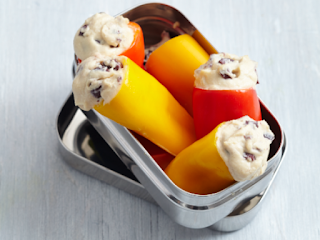How to Drink Water Safely
Water is vital for life, but you should consider testing its purity and safety.
“Don’t drink the water,” is not a warning typically heard in the U.S. Yet some of us may be drinking water that could cause harm. Major issues with contaminants, such as lead or bacteria, make news headlines, but more subtle issues may go undetected. Taking time to get informed about the water in your home is important for your health and safety.Where to start? Review the annual water quality report sent by your local public water utility (check with your local provider or get a copy here). “The water in one community could be vastly different from that of another community,” says Kristi Pullen Fedinick, PhD, a staff scientist in the health program at the Natural Resources Defense Council (NRDC) in Washington, D.C. “Even the water in the house down the street could vary from yours, especially when it comes to contaminants like lead.”
If you suspect an individual household problem, you can get your water tested, either by your local water supplier or from a certified testing lab listed here. Fees vary depending on the specific contaminants you’re measuring.
Lead
This infamous toxin that impairs brain function gets into drinking water when it comes into contact with lead in pipes or lead solder that holds water pipes together. “Water utilities typically add a chemical that coats pipes, and that coating allows the water to pass through without interacting with lead in pipes,” Fedinick says. “The reason Flint, Michigan, recently had high levels of lead in the water is because the city switched to a water source that was inadequately treated, which caused the protective chemical coating on lead pipes to break off, allowing the water to come into direct contact with lead.”The tricky thing with lead is you can’t see, taste, or smell it. “The only way to know if there’s lead in your water is to get it tested,” Fedinick says. “A number of local water utilities offer free or low cost testing for lead, or you can send water to a certified lab for testing.”
Disinfection
“Chlorine and chloramine are added to water to kill disease-causing pathogens,” Fedinick says. “One of the downsides is that the chemicals themselves can change the taste and smell of water.” Another concern with disinfectants is that they can combine with organic matter, such as miniscule bits of leaves that get into water, and create disinfection byproducts. These compounds slightly increase the risk of bladder cancer. The EPA limits levels of disinfection byproducts in public water, and annual water quality reports list the amounts of these contaminants (most commonly trihalomethanes and haloacetic acid).Other Contaminants
“Drinking water contaminants can vary widely based on where you live and the activities happening there,” Fedinick says. “So, consider likely contaminants before getting specific testing.” For example, if you live in a farming community, your water might have higher amounts of nitrates and pesticides. In an industrial area, contaminants might include benzene or toluene. And many cities add fluoride to water (as a dental protectant), which some people prefer to remove.The best way to ensure you’re getting clean, healthy water is to be an informed consumer,” Fedinick says. “Don’t dismiss annual water quality reports, and seek individual testing if you have private well water (which isn’t regulated by the EPA).”
Getting Purer Water
“Look for filters that provide the most protection at a price that makes sense for you,” Fedinick says. Check the website of NSF International to find out if the filter you’re considering is certified to remove the contaminants you’re concerned about. The Environmental Working Group also provides a water filter buying guide. Here are two common approaches, although there are hundreds of products available.Adsorption: Uses a medium such as activated carbon to latch onto and remove contaminants. Some mainly remove chlorine, while others also remove chloramines, disinfection byproducts, pesticides, industrial pollutants, and lead. Adsorption is used in everything from pitchers to whole house filtration units.
Reverse osmosis: Uses semipermeable membranes to eliminate many substances not removed
by adsorption and is the only NSF-certified way to reduce nitrates and fluoride. Most cost effective to
use for drinking water. Commonly available as under-sink units.
Don’t assume bottled water is any safer or cleaner than tap water,” Fedinick says. She shares these important considerations:
Check the water bottle label for the water source. It might be a municipal source like you get from your tap.
Bottled water is regulated by the FDA while tap water is regulated by the EPA. These agencies’ standards for chemical pollution of water are nearly identical.
Bottled water has a big impact on the environment due to the fossil fuels used to manufacture and ship bottled water. Plus, only 37 percent of water bottles are recycled.























